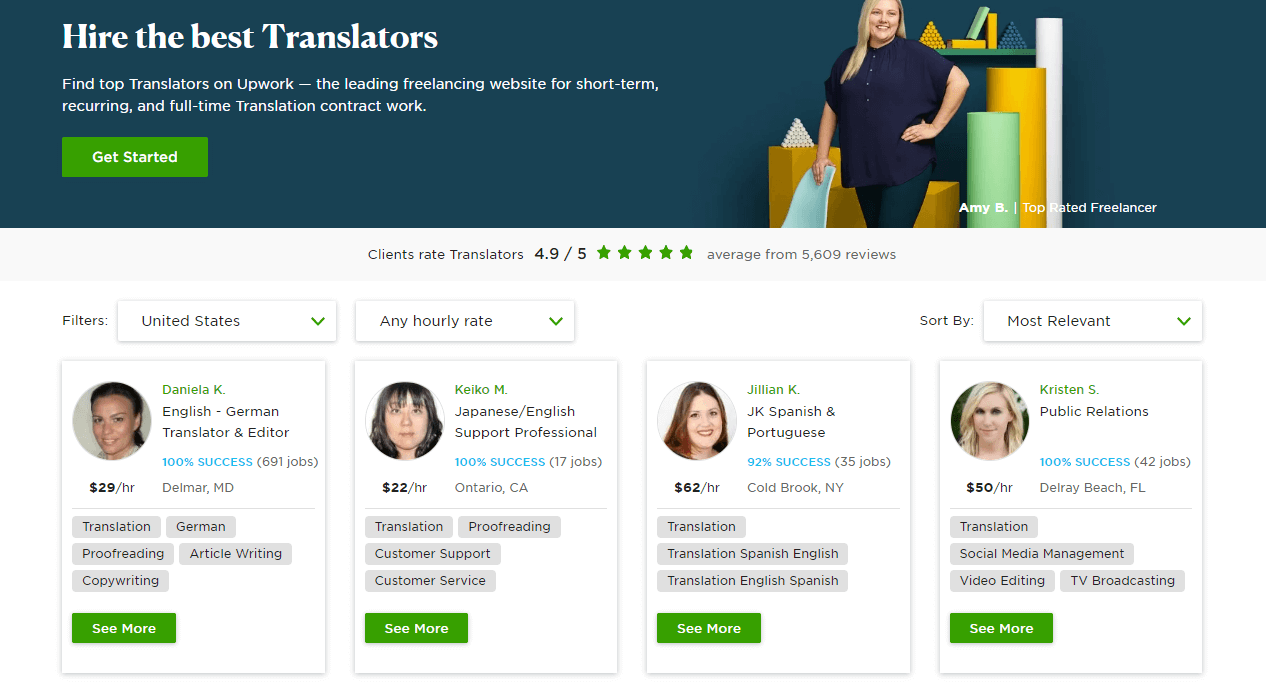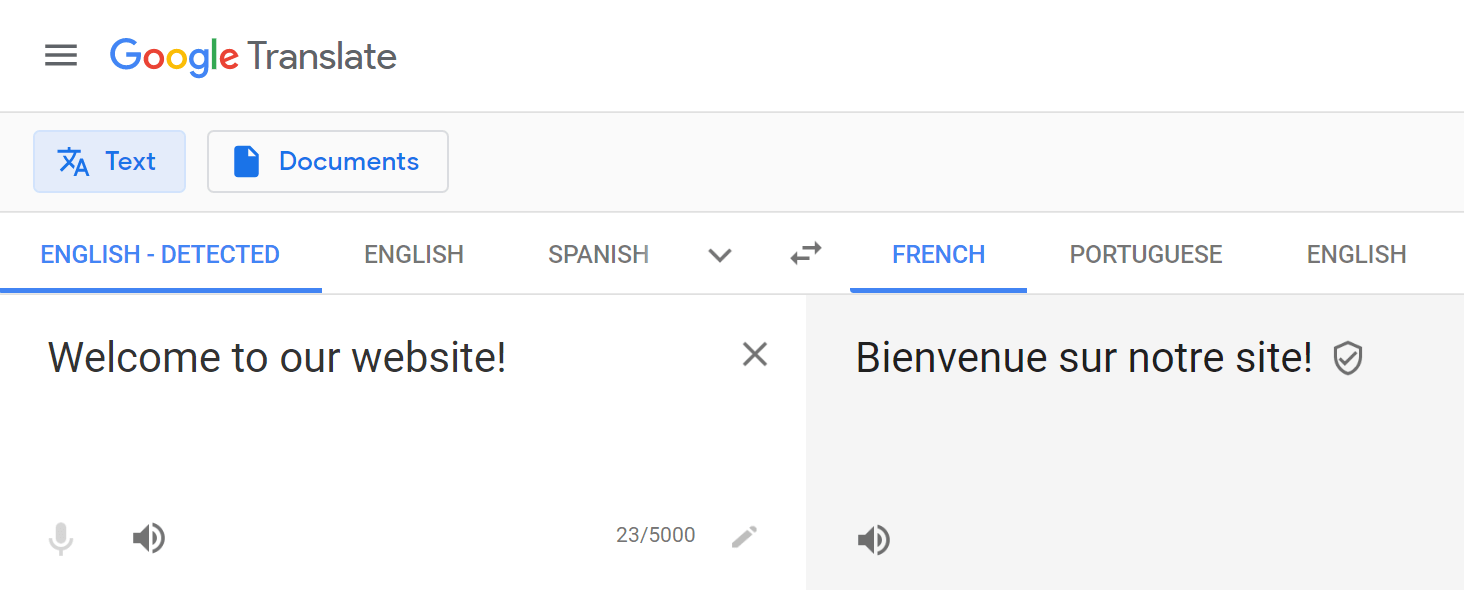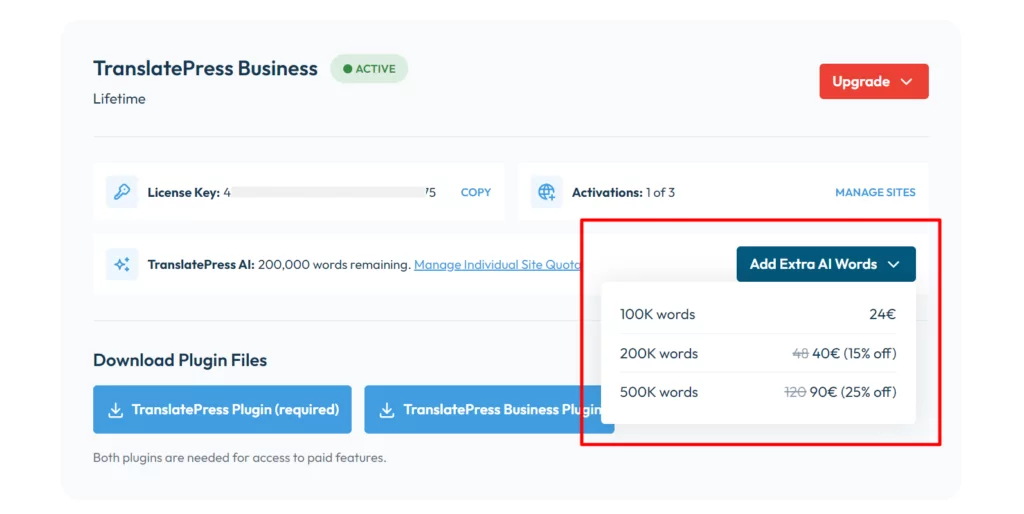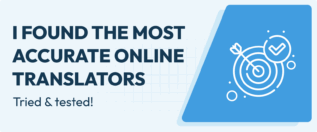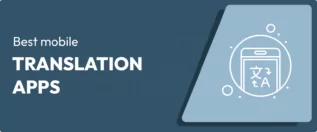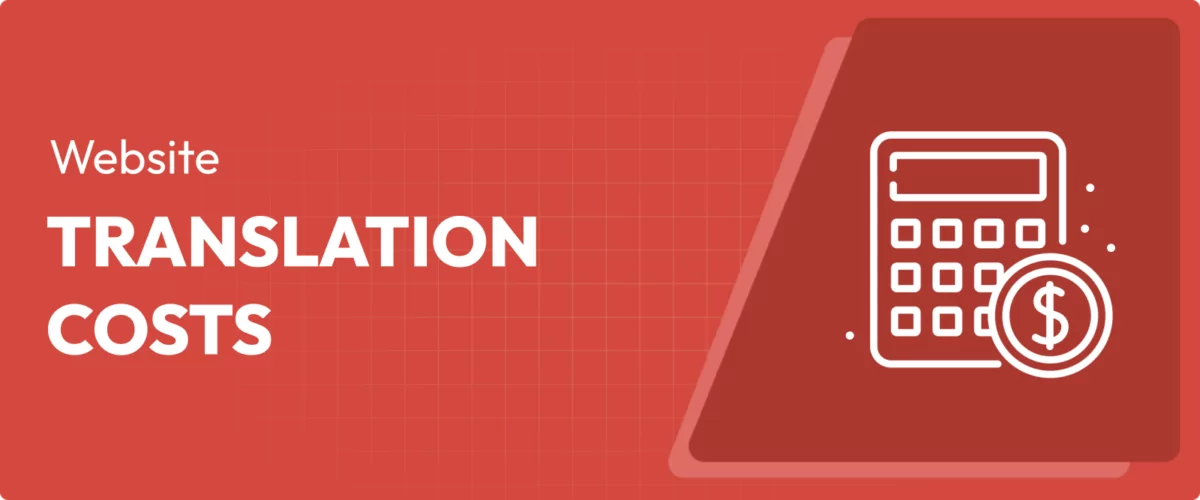
In this post
Looking to find out what website translation costs to expect for your future multilingual website?
The truth is, if you want to maximize your website’s potential audience, you’ll need to cast a wide net. That includes making your content available in multiple languages. Of course, translating an existing website can sound like a pretty expensive proposition.
The good news is that there are many ways to offer your site in multiple languages. You have various options at your disposal, and they vary in complexity, speed, and price. In other words, you should be able to find a method that suits both your needs and your budget.
In this post, we’ll look at five ways you can create a multilingual website. We’ll talk about how they work, and what website translation costs you can expect. Let’s jump right in!
Why a Multilingual Website Can Be a Smart Investment
You may already be set on translating your website – in that case, feel free to skip down to the five methods below. If you’re still on the fence, however, it’s worth taking a moment to discuss why it’s a smart step to take.
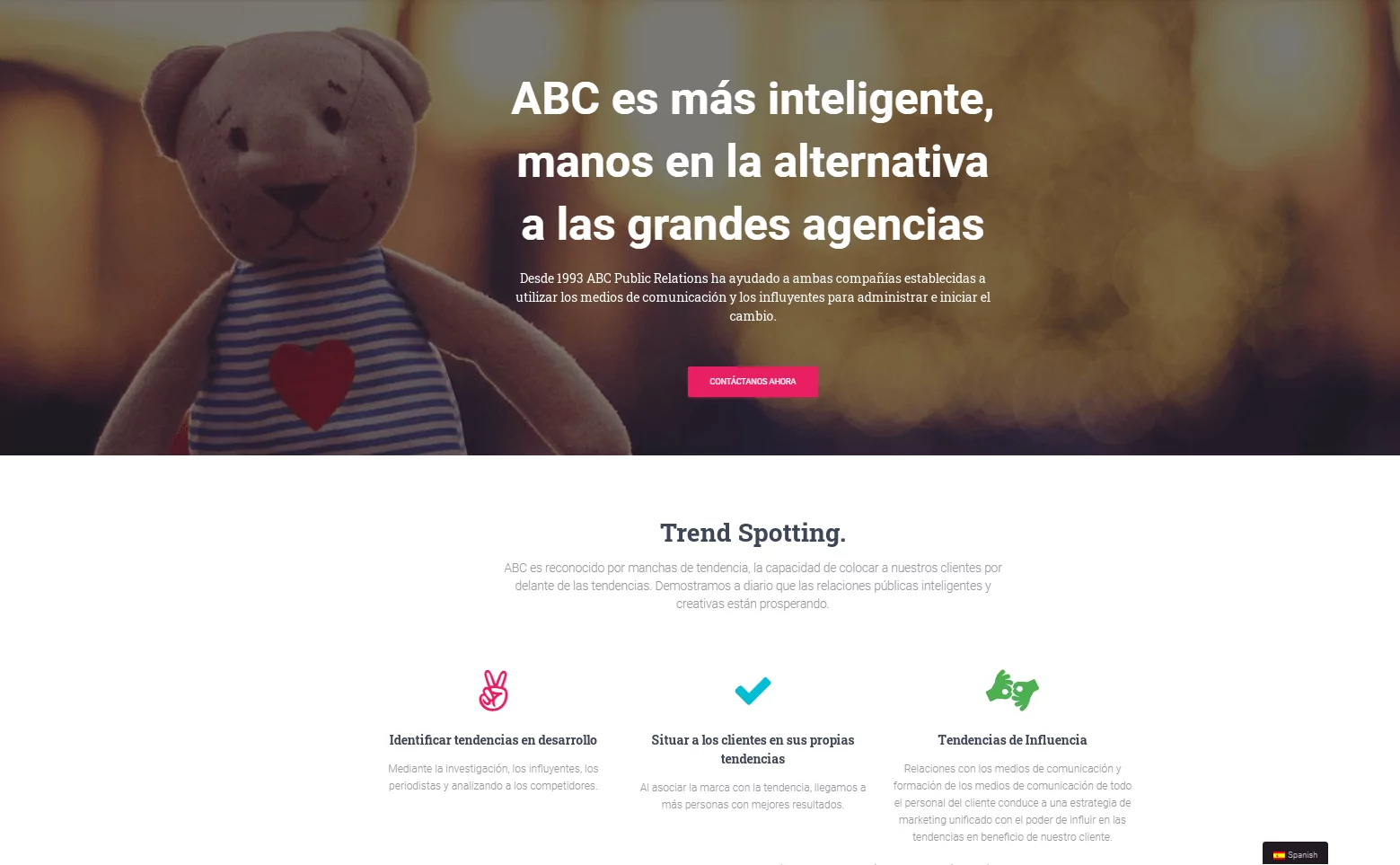
There are circumstances in which translating your website doesn’t make much sense. For instance, if you run a local physical store, you’re not likely to benefit from attracting website visitors from another country (unless you live in an area with a thriving tourism industry). Translation may also be overkill for small personal portfolios and blogs.
However, for most other websites, translation is at least worth looking into. Only offering your website in a single language restricts your potential audience, which is particularly troublesome for online businesses. By creating a multilingual site, you can:
- Make your website much more accessible;
- Reach a broader audience – and demographics your competitors may not be targeting;
- Bring in additional conversions and revenue.
Despite these advantages, many people dismiss the possibility of translation out of hand. They assume it will be too difficult, too expensive, or both. In reality, while translating your website will take some level of investment, it can be more achievable – and profitable – than you might assume.
5 Ways to Translate Your Website in 2025 (And the Website Translation Costs to Expect)
If you’re considering creating a multilingual website, the first step is to familiarize yourself with the various options available to you. There’s more than one way to go about the process, and each method has unique pros and cons.
Plus, website translation costs can vary widely based on the approach you take. With that in mind, here are five ways you can translate your site, along with what to expect from each.
1. Perform a Manual Translation
First, let’s discuss the most straightforward and yet often most difficult option – translating your site manually. It is possible to simply take your website’s existing content and put it into another language by hand yourself.
Of course, this method assumes that you (or someone on your team) speak your target language fluently. You’ll be restricted based on the languages that are already accessible to you, which may or may not be the ones you want to focus on.
This method also takes the longest, unless your website is extremely small. On the flip side, manual translation is technically free – the only investment required is time.
If you happen to fluently speak one or more languages that your target audience might be interested in, and your site only has a few pages, manual translation may be within your reach. Otherwise, you’ll likely need to consider one of the following methods instead.
2. Hire a Professional Translator
If you can’t (or don’t want to) translate your website yourself and there’s no one on your team who can get the job done, you can always hire a professional. This is another fairly straightforward option, although it can be prohibitively expensive.
There are lots of professional translators available for hire. You can look for them on freelance job boards such as Upwork and Fiverr. You’ll find a wide range of options, and should have little trouble locating a few who know your target language:
Of course, you’ll need to vet potential translators carefully. The quality of your translated site will depend on their skill. It’s important to take time and look into each translator’s experience, past projects, and testimonials.
The benefit of this approach is that, if you choose the right person, you can end up with an extremely accurate and localized translation. However, there are two significant drawbacks. One is time, since a professional translator will need to go through and work on each of your pages and posts by hand.
The other issue is money – this is typically the most expensive option. Costs vary widely based on the translator’s experience, and some price by the word while others charge by the hour. For reference, most translators on Upwork charge between $20 and $50 per hour.
This means that even for a small website, you’re likely looking at a few hundred dollars. For a medium-to-large-sized website, professional translation prices will typically be in the thousands or tens of thousands of dollars – and that’s just for one language. This is only a viable option if you’ve got lots of time and money to spare on the necessary website translation costs.
3. Use Machine Translation
If you’ve ever used Google Translate, you know that computers are now capable of translating content from one language into another. Therefore, another option for creating your multilingual website is to use machine translation. This includes any tool that translates content automatically, without the need for human intervention:
Of course, you probably don’t want to simply copy-paste your site’s text into Google Translate. If you decide to go this route, it’s best to purchase a premium solution, so you can be more confident in the accuracy of the resulting translations.
Again, the costs involved here will vary. However, you can expect to spend a few hundred dollars for mid-tier machine translation software. Bablic, for example, offers plans starting at $24 per month (billed annually).
This can be one of the most affordable ways to translate your website. It’s also a particularly quick method. Just keep in mind that there are a few downsides as well. For starters, unless your chosen software integrates fully with your website, you’ll still have to set up your translated pages manually.
More importantly, no machine translation tool is perfect. They are bound to make errors, and since no human is reviewing the translations, those errors can easily go unnoticed. This can harm your visitors’ experience and reduce your credibility. Plus, it may be hard to find software that can account for specific dialects and other localization considerations a fluent speaker can provide.
4. Leverage Computer-Assisted Translation
Next up, let’s talk about computer-assisted translation. This sounds a lot like machine translation, so it can be very easy to confuse the two techniques. However, there are some key distinctions between them.
As we’ve discussed, machine translation is when a piece of software turns one language into another without any human intervention. Computer-assisted translation, on the other hand, is when a human performs a translation with the aid of specialized software (as opposed to purely by hand).
This approach has a few benefits. It’s often cheaper and quicker than manual translation since it takes advantage of software to ease the process. Yet it doesn’t rely completely on that software, resulting in a more accurate final result.
The problem with computer-assisted translation is that it’s only half a solution. It still requires a professional translator to interface with the software. If you have someone on your team who is able to perform translations, purchasing this kind of software can provide a big advantage. You can expect to spend somewhere around $100 per month (at a minimum) for such a tool.
Otherwise, you’ll simply need to hire a professional translator, who may or may not use this kind of technology. In either case, you’re looking at the same costs we discussed earlier – anywhere from a few hundred to several thousand dollars. Unfortunately, you have little control over which tools your hired translator will use. It’s unlikely you’ll benefit directly from this method in such a scenario.
5. Adopt a Hybrid Approach to Website Translation
The four methods above all have their advantages, but also feature some significant drawbacks. If you want to maximize accuracy, speed, and cost, your best bet is to adopt a hybrid approach. In other words, you can use a combination of some of the above techniques in order to access their benefits while minimizing potential downsides.
For instance, one popular option is to start with a machine translation, and then have a human review and correct the resulting content as needed. TranslatePress is a WordPress translation plugin that provides an easy way to implement this method.
This tool gets the job done quickly and integrates with WordPress so you won’t have to copy or port over the resulting translations. Even better, it provides an intuitive visual translation interface. The translation process happens in the front-end. This makes it easy for one or more people to review the machine translations, editing and tweaking them as necessary.
TranslatePress starts at €99 per year for a single site, but you can translate your site into one additional language with the free version as well.
However, with a premium license, you also get TranslatePress AI and a set amount of AI words to translate with it. The Business plan gives you 50K AI translated words (roughly 250k characters) to translate your site using the integrated AI solution. But then, if you run out of those, you can always get more from your account page at a pretty fair price.
This is the easiest and quickest way you can go about it since it requires no set up from your part. You just enable the functionality, and then TranslatePress chooses from top machine translation services the one that would work best for your language pairs and simply displays the translations on the front end of your site.
If, however, you want to save as much money as possible and time is not a problem for you, you can also opt for one of the integrated machine translation services (Google Translate and DeepL), which offer a free tier of 500.000 characters/month. Keep in mind that the DeepL API is available in the premium version of TranslatePress, however Google Translate can be used with the free version.
You can calculate your website’s character count using one of these web page word counter websites so you can have a better grasp of what the perfect solution is for you specifically.
After that, you can have someone on your team review the translations if they happen to be fluent in the target language.
If not, you can hire a professional translator to do that job for you and use the Translator Accounts add-on to give them access to specific languages only. While not free, this is considerably faster and cheaper than hiring someone to translate your site’s content entirely from scratch. You’ll be looking at the same ballpark rates between $20 and $50 per hour. However, the number of hours required will be much smaller.
The final website translation costs for this method should come in around a few hundred dollars. In exchange, you’ll get quick results and can ensure that they’re as accurate as possible. In other words, this method tends to provide the best return on your investment.
TranslatePress Multilingual
Conclusion
At the end of the day, you’re not going to be able to translate your website for free. Even if you happen to be multilingual and can perform a manual translation, the time investment involved will be quite high – and as we all know, time is money.
That means you’ll need to choose your approach carefully, opting for a method that minimizes website translation costs while still providing quick and accurate results. To recap, here are the five main options at your disposal:
- Perform a manual translation (free, but restrictive and very time-intensive).
- Hire a professional translator (anywhere from a few hundred dollars to tens of thousands of dollars).
- Use machine translation (usually a few hundred dollars for a premium tool).
- Leverage computer-assisted translation (around $100 per month if you have an in-house translator, otherwise the costs are the same as professional translation).
- Adopt a hybrid approach ($100 or less for an AI translation tool, and then a few hundred dollars for a review by a professional translator).
Do you have any questions about how to get the ball rolling on your multilingual website project? Ask away in the comments section below!
If you found this post helpful, please check out our YouTube channel, where we constantly upload short & easy-to-follow video tutorials. You can also follow us on Facebook and Twitter to be the first to know each time we post.
